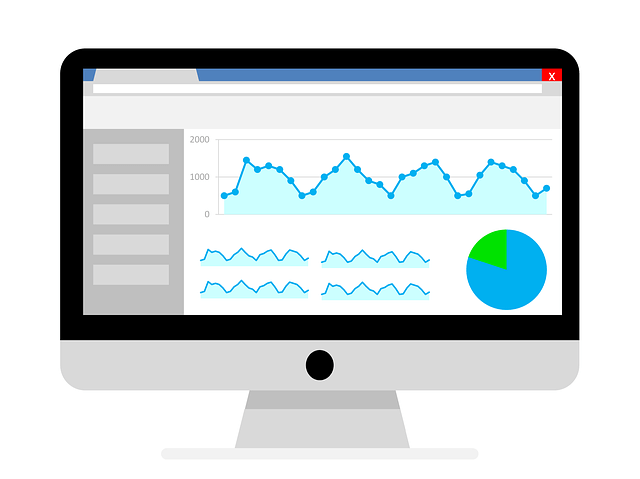In fact, statistics show that word of mouth marketing and peer to peer marketing are a huge driver in growth.
61% of people have recommended a local business to someone they know by word of mouth. Consumer Review Survey – BrightLocal

But, it doesn’t just stop at local businesses. Think of back in the day when PayPal popped up. If you were an early user of PayPal, you probably became a user because of word of mouth. Whether by being invited by a friend directly, or because you heard they were giving away free money to new users.
PayPal, ended up spending around $60 million dollars as a result of their referral program. You see, if the user signed up they would get $20. They could earn another $20 for referring a friend. This strategy opened up the referral flood-gates and lead to over 100,000 users in just 1 month.
That may be excessive for the average business. But, the tactics behind it are repeatable. Have a product that people want or need. Attract customers, and get those customers to spread the word. Eventually, you’ll have a network of people talking about you. The best part is, customer acquisition will be a lot cheaper on the long run than continually running regular marketing campaigns (even if you do choose to incentivize referrals).
So, now you get that word of mouth is a great channel for growth. But what exactly does that mean and how do you make it scalable?
Where word of mouth marketing came from
Before we dive too far in, let’s paint a clear picture of word of mouth marketing.
Generally speaking, word of mouth marketing is a form of business promotion/advertisement shared through customers, partners, and even employees.
With the birth of the internet and social sites, word of mouth blew up. But, it’s not a new phenomenon, just done in a new and improved way… thanks to social media. In fact, generating a buzz for a product with actual word of mouth (literally meaning talking between two people) obviously goes back, way back. But actual techniques for advertising with word of mouth started gaining popularity in the 70’s.
There were problems, however, with the traditional use of word of mouth. The biggest problem being that it was difficult to measure. Therefore, it tended to take a back burner for many marketers.
Today, however, word of mouth seems to be one of the top approaches used in the marketing industry.
How word of mouth marketing is used now
Word of mouth in today’s data-driven world derives from many aspects of marketing. In fact, many types of marketing rely on word of mouth to happen. Think of buzz marketing and viral marketing.

It’s pretty evident why word of mouth marketing has gained popularity in recent years.
- The best reason is because most marketers are using the channels that word of mouth thrive on (social media is king). Yep, word of mouth bleeds into social media marketing!
- Another reason is that we live in a data-driven world, so practically everything about word of mouth marketing is easily measurable. Think Google Analytics, etc.
- The last most relevant reason is that people love engaging with brands, and you can find brand ambassadors on practically every medium online.
Why word of mouth can be a scalable channel
It can be difficult for some businesses to scale through SEO and content alone. This is because many businesses are using paid ads which is making it more expensive for many smaller businesses to be seen.
But, with word of mouth, most businesses can create a network effect. They might not turn into viral sensations, but the outcome can still be pretty good. This is especially apparent when things like a referral program is implemented.
With word of mouth, most businesses can create a network effect. Share on XBut how does that make it scalable? Well, a referral program, for example, uses your existing customer base, who are already cycling through your existing marketing channels. So when these customers hit a certain point, they are being primed for word of mouth to occur.
How to make word of mouth happen automatically
Running some sort of rewards program can help you immensely when it comes to word of mouth marketing. No matter what type of rewards program you choose, you can make it even easier for word of mouth to occur if you do these few things…

- Implement word of mouth into your marketing processes — Yes, word of mouth can happen on its own. But, sometimes, you need to help provoke it to get the ball rolling. Use your existing marketing campaigns to fuel word of mouth to occur. Create shareable content, be easy to share, and promote that you’re looking for referrals!
- Use automation where you can — You may have some customer touch points automated already. Why not automate your rewards program too. For example, post purchase, you probably automatically send a receipt email. You might also enroll them in other email campaigns. Use this point as an opportunity to ask users to refer. What we’re saying is… You can automatically trigger a rewards program invite to send after certain actions.
- Take it up a notch with software — Between referral software and automation software, you can easily create a network effect. Your programs can feed into your existing marketing campaigns, which feed into your customer base, which eventually spreads out as word of mouth.
- Social media is a big player in this — Social media is evolving rapidly. And it seems new social sites are popping up, and creating a buzz. The key takeaway is that social media… is well, social. People are always communicating on these platforms, and engaging with friends and brands. But the icing on the cake is the tracking capabilities social media provides. Brands can measure consumer effectiveness easily, and learn who their target markets are. Plus, social platforms are baked into many marketing processes from the get go — meaning, whatever campaigns you plan on running should showface on your social sites too.
Ways word of mouth can be implemented
You need to be able to see the numbers. In today’s data-driven world, there has to be data to back up your marketing strategy. This means creating a repeatable growth channel is key.
Fortunately, there are ways to track word of mouth data. Here they are…
1 Reward programs
Think referral, partner, and even loyalty programs. Rewards programs are easy to build, scale, and automate. Each of these types of programs can be easily measured, too. To make things even easier, software for these programs makes implementing, tracking, and even rewarding a breeze.
Referral and partner programs provide users with links to share with their friends. So no longer are the days of cold-calling unsuspected referrals. Resulting in poor social currency and tension between friends.
Now, accepting an invite to check out a business is done on the terms of the referral. There are plenty of easy referral program ideas you can try out to maximize your word of mouth and increase you ROI! Like simply asking a happy customer for a referral.
2 Influencer and affiliate marketing
Similar to the rewards programs listed above, influencer and affiliate marketing are great program options for increasing word of mouth. These types of programs have a heavy focus on creating brand awareness, and work really well when well-known advocates are involved.
Though these types of programs don’t rely on recommendations from known individuals, they do work because the advocate is seen as a trusted source.
These types of programs are also easily scalable, and rely on software for tracking – making them great for creating a buzz – quickly.
3 Reputation Management
It’s not just reward programs that work in your favor when creating talk about your brand. Reviews and testimonials can be used as a scalable channel.
You see reviews are just other ways to get digital word of mouth. And, in most cases, people are looking for outsider input before making a buying decision. They may not be direct recommendations, but reviews and testimonials are a sought out factor for many leads. Plus, they make you even more discoverable online.
Unlike the other channels mentioned, reviews and testimonials are great for all business types. And you can use them along with other channels to maximize your word of mouth reach.
How do you know which word of mouth channel will work for you?
All of the channels we have mentioned are an owned media channel. They are data-driven and are scalable, and all of which rely on social currency.
But how do you choose one for your business? The good news is, you don’t have to choose just one. In fact, some businesses rely on a variety of performance-driven networks to create word of mouth.
With that being said, your business might not be cut out for all of them, so you have to decipher which ones will work best for your customer base.
For example, an ecommerce store may do better with an affiliate or loyalty program vs referral program. Whereas a service type business will be better off implementing a referral program.
Program dependencies
Typically, the frequency of purchase and the price of purchase are big determining factors in choosing the type of program you should use.
Frequency – The type of program you implement relies on the frequency of customer purchases. Typically, referral type programs like partner and customer programs, tend to work with both low and high frequency. Whereas loyalty, affiliate, and influencer programs work better with high frequency purchases.
Price – The price has a role in determining the type of program, too. For instance, a loyalty type program doesn’t work as well with high-priced purchases. This is because these types of purchases are not made frequently enough. Whereas a referral program actually works really well with high-priced purchases. Think of a coffee shop, most have loyalty cards, but not referral cards.
Here’s the kicker…all of these programs can get customers excited… which can raise up your word of mouth traffic. Oh, and it’s all totally measurable.
Deciding on program promotion techniques after implementation
You’ve already been working on prompting word of mouth to happen. But, now that you have a program up and running, promoting word of mouth is even easier. Plus, your program can be implemented into your other marketing strategies.
Your program makes it a lot easier to track, ask, and reward participants, but it can’t always do it alone.
Here are some helpful tips:
- Start promoting before the launch. You’ll want to advertise your rewards program ahead of time to get people excited. Doing a countdown in your newsletters, on your social sites, and even on your website can intrigue users to join.
- After your program is live, continue promoting it. This will keep the momentum going and spark people to keep sharing. You’ll want to promote on all fronts! Your social media profiles, emails, and newsletters are great avenues to promote on.
- Be sure to promote the reason (aka reward) as it can help drive interest. No matter how much someone may like your business, sometimes a nudge is still needed to get people talking.
Analyze, measure, and repeat
Like any other marketing strategy you have to figure out what you’re measuring for success. To do this, you need to find your baseline.
By finding your baseline, you can establish which direction you need to take. Share on XIn order to get to where you want, you have to know where you’re at. The same idea applies to tracking your word of mouth. By finding your baseline, you can establish which direction you need to take.
But, remember… your baseline can change! So, pick a date down the road, and adjust your word of mouth strategy as necessary. Look at what you did to begin your word of mouth journey, and see if there are adjustments you can make. Your word of mouth evolves as your customer’s needs and wants change.
Summary
We’ve covered a lot of word of mouth how-tos, and whys. As you can see word of mouth happens on its own. But, when you pair it with the right tools, you can make it a scalable and powerful channel.
The power of word of mouth is undeniable, and as long as you have the right toolkit, you can make it happen both online and offline.
Want to help contribute to future articles? Have data-backed and tactical advice to share? I’d love to hear from you!
We have over 60,000 monthly readers that would love to see it! Contact us and let's discuss your ideas!

